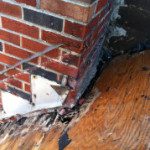The growing interest and importance of air quality continues to reinforce our great feeling about American Clay Earth Plaster. There are some interesting advantages that American Clay offers to those wanting more consistent humidity levels and the reduction of potential mold and mildew, as well as a quieter space.
From personal experience we have lived with clay plaster in our own home and have experience with a broad variety of applications and placement of clay.
We have American Clay plaster in a kitchen/dining area, sun room, bedroom and in two bathrooms. We’ve enjoyed the benefits clay provides in every space and have witnessed, felt, and breathed in it’s ability to absorb and release water vapor when high levels of humidity are present without a spec of mildew appearing anywhere -EVER! What might seem to be a vulnerable location is where we applied clay along the top 18″ above the tiled walls in two shower areas but absolutely no problems have resulted- instead it benefits these areas. In contrast, if a painted wall experiences high levels of humidity such as in a bathroom the surface will eventually develop condensation from water vapor creating an environment favorable for mold and mildew growth. Another more extreme experience that we had was with several large 3′x6′ foot display panels we made and applied with clay plaster for an expo. After a three day event we drove home and with the onset of a rain storm we rushed the panels into our (less than perfect) garage several years ago. We had an unfortunate heavy rain that evening that ultimately flowed into the area where these panels were situated.The panels were trimmed with wood for presentation purposes. After about a week we noticed a mold made its way up the wood strips but did not touch the clay. The mildew completely avoided the clay. If ever conditions were ripe for mildew this was it.
As noted in this last image, the more clay there is in a given space the greater the humidity buffering. We called a few customers that have applied the clay in wine cellars as this is an excellent application choice to assist in maintaining a consistent humidity so critical in a wine cellar.
In reading about climate control in wine cellars, efforts must be made to maintain a certain temperature as well as humidity level.
If the humidity rises above 70% I have read that this is when the potential for mildew on the corks can develop which may create a problem for the wine.
There are several benefits when using the American Clay plaster- it assists in maintaining consistent humidity levels, assists in preventing mold and mildew, helps purify the air which is also important, and it is beautiful! We asked several customers how their wine cellars are doing after the applying the clay years earlier. Shown here are two other wine cellars. Most of the wine cellars include applications on the ceiling contributing to humidity buffering benefits.
Lastly, this open air lobby at Mica Village is a true testament that the humidity does not bother it. The benefits of American Clay go well beyond those mentioned here; in fact they are nothing short of amazing!
Interesting article: The 10 Most Common Wine Cellar Problems and How to Overcome Them
Click here for a humidity demonstration done by American Clay.
Post written by Cathy Silver of The ARCH Architectural Finishes, Flooring and More


